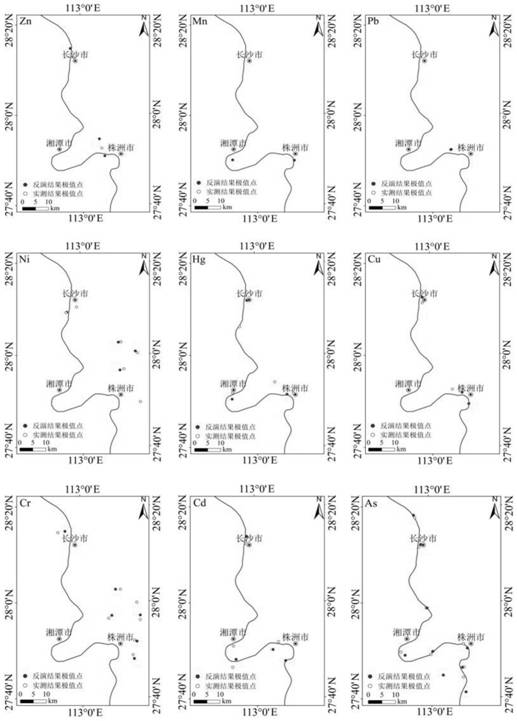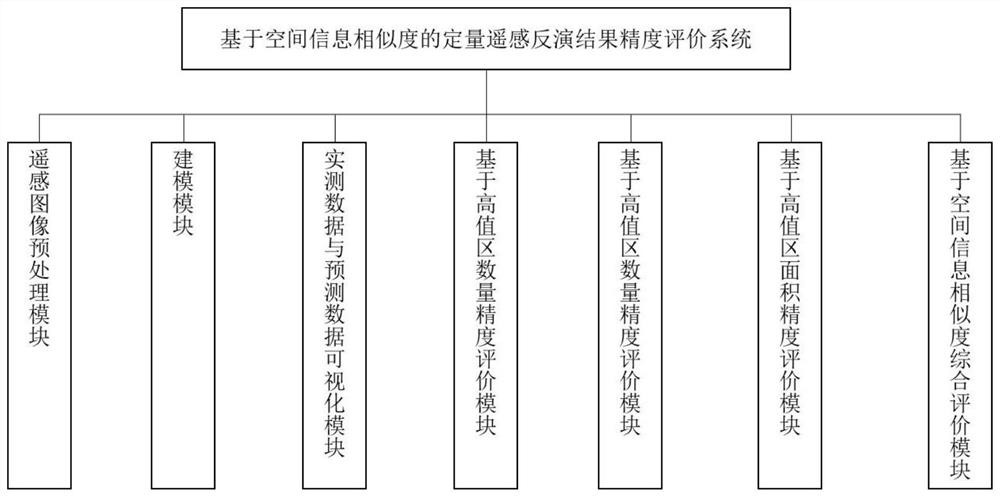Quantitative remote sensing inversion prediction result evaluation method and system
A remote sensing inversion and precision evaluation technology, applied in the field of remote sensing inversion, can solve the problems of inability to meet the consistency and stability test of remote sensing inversion, selective calculation of high-value areas, inconsistency, etc.
- Summary
- Abstract
- Description
- Claims
- Application Information
AI Technical Summary
Problems solved by technology
Method used
Image
Examples
Embodiment 1
[0039] Such as figure 1 As shown, the embodiment of the present invention provides a method for evaluating the accuracy of quantitative remote sensing inversion results, including the following steps:
[0040] Obtain the measured data of the target element content in the preset area;
[0041] According to the obtained remote sensing image reflectance of the preset area, the target element content prediction data of the preset area is obtained through the remote sensing inversion model, and the remote sensing inversion model is used to establish the corresponding relationship between the remote sensing image reflectance and the actual measurement point element content;
[0042] Use the measured data to perform interpolation color segmentation (visualization) by geostatistical method to obtain the abnormal distribution map of measured elements, use remote sensing data to obtain predicted element content through remote sensing inversion model, and use geostatistical method to per...
Embodiment approach
[0045] As an embodiment of the present invention, the high-value area of the predicted data is compared with the high-value area of the measured data, the number of high-value areas of the high-value area of the predicted data and the high-value area of the measured data is counted, and the prediction accuracy rate, The prediction error rate and the prediction missing rate are used to obtain the evaluation accuracy based on the number of high-value areas; the correct rate, error rate, and missing rate are obtained according to the following formula:
[0046]
[0047]
[0048]
[0049] Among them, P Currect is the correct rate, P False is the error rate, P Missing is the missing rate; a c Indicates the correct inversion of the number of high-value areas, a f Indicates the number of high-value areas in wrong inversion, a m Indicates the number of high-value regions that have not been inverted, A m Indicates the number of measured high-value areas of the ele...
Embodiment 2
[0060] Such as figure 2 As shown, the embodiment of the present invention also provides a remote sensing quantitative inversion result accuracy evaluation system including:
[0061] The acquisition module is used to acquire the measured data of the target element content in the preset area;
[0062] The inversion module is used to obtain the target element content prediction data of the preset area through the remote sensing inversion model according to the acquired remote sensing image reflectance of the preset area;
[0063] The evaluation module is used to evaluate the comprehensive index evaluation of the abnormal feature similarity to the measured data and the predicted data; the comprehensive index evaluation includes: evaluation accuracy based on the number of high-value areas, evaluation accuracy based on the distance of high-value areas, and evaluation accuracy based on the high-value area Area evaluation accuracy.
[0064] As an embodiment of the present invention...
PUM
 Login to View More
Login to View More Abstract
Description
Claims
Application Information
 Login to View More
Login to View More - R&D
- Intellectual Property
- Life Sciences
- Materials
- Tech Scout
- Unparalleled Data Quality
- Higher Quality Content
- 60% Fewer Hallucinations
Browse by: Latest US Patents, China's latest patents, Technical Efficacy Thesaurus, Application Domain, Technology Topic, Popular Technical Reports.
© 2025 PatSnap. All rights reserved.Legal|Privacy policy|Modern Slavery Act Transparency Statement|Sitemap|About US| Contact US: help@patsnap.com



